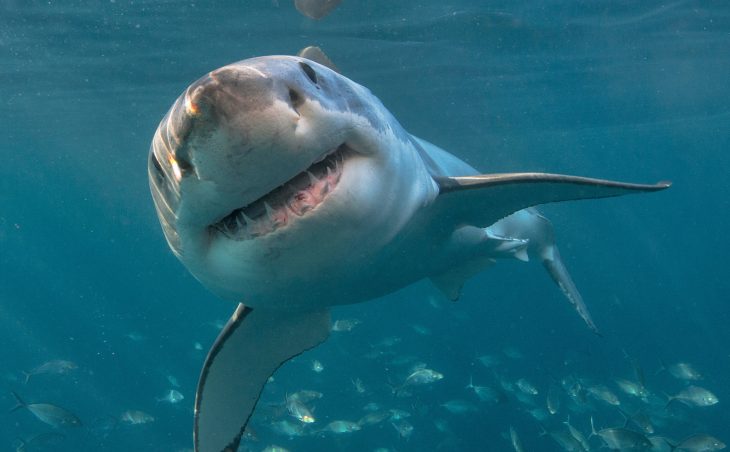
There are so many types of sharks from all over the world. However, most people only think of sharks as one specific type. This is because, in films, you only ever see one type of shark.
That is the big and scary Great White Shark with sharp teeth. Most horror films like Jaw and The Reef only show this type of shark. While sharks are very scary, there is a lot more to them than just being big, white, and terrifying.
If you’re interested in learning more about the different types of sharks, their characteristics, and other trivia, then keep on reading!
What is a shark?
Many people ask, “Is a shark a fish? Is a shark a mammal?” Sharks are carnivorous fishes. They have gills on the sides of their head. They also have a cartilaginous skeleton. A cartilaginous skeleton is a type of skeleton made up of cartilage instead of bone tissues.
Many also ask, “How many species of sharks are there?” It might come as a surprise, but there are over 500 shark species in the world. Most of the ocean hasn’t been explored yet, so this number can continue to increase.
Of the shark types people do know about, the International Union for Conservation of Nature (IUCN) records their Conservation status and other important information.
The types of sharks that scientists know about are all different from each other. They differ in size, shape, and other characteristics.
Angel Shark
Scientific name: Squatina squatina
Conservation status: Critically endangered
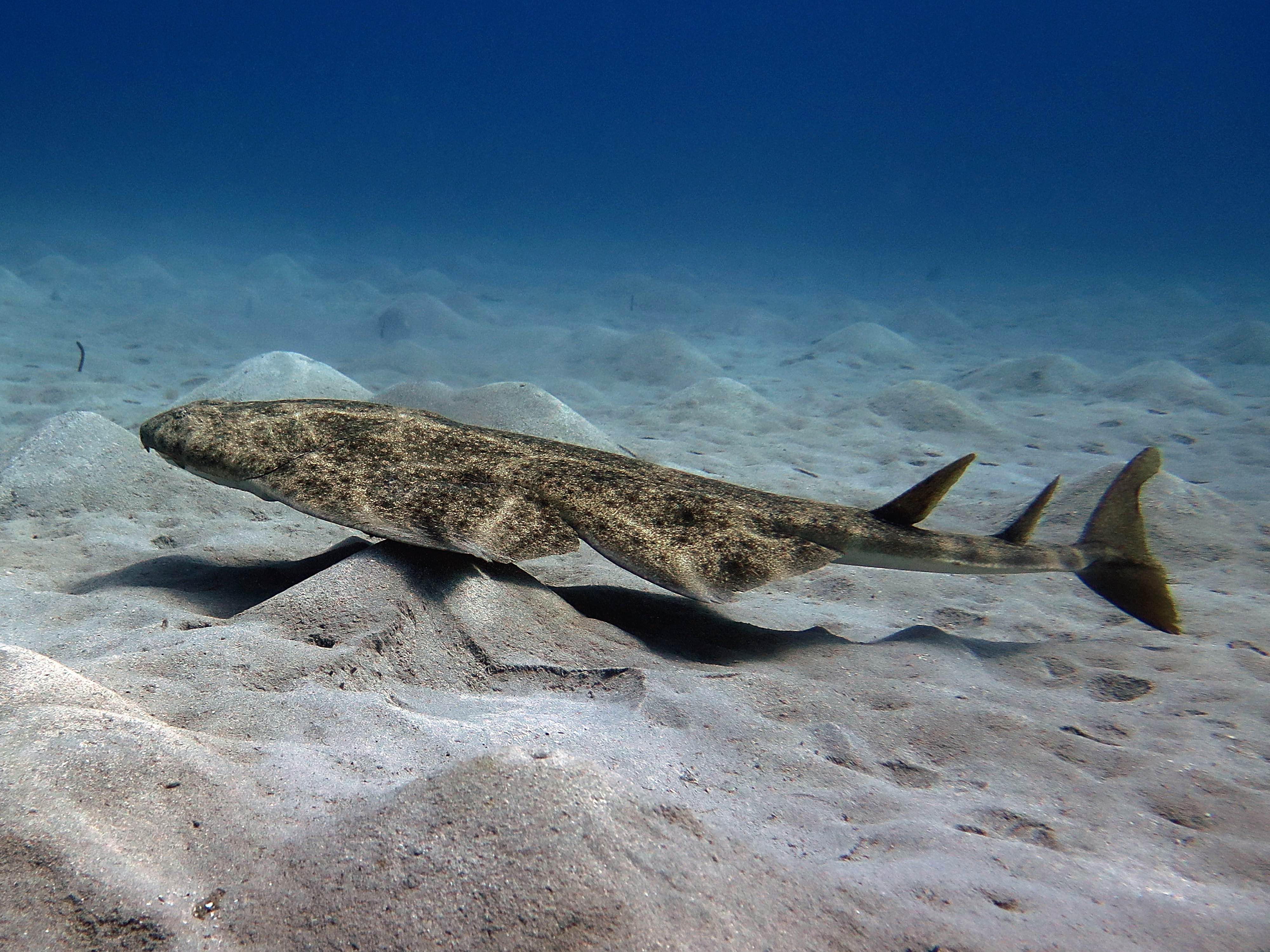
Angel sharks refer to a group of sharks who have flat heads and bodies. At first glance, they look like stingrays. Their pectoral and pelvic fins look like wings, and they have five gill slits in front of their pectoral fins.
Angel sharks can grow up to 6.25 ft. long. You’ll find angel sharks deep in the ocean. They inhabit the waters of the Canary Islands, Morocco, Sweden, and Norway. Some of them live as deep as 4,300 ft down the ocean.
There are other types of sharks in this group. Some examples are the African angel shark and the common angel shark. Unfortunately, their population continues to dwindle because of recreational fishing.
Basking Shark
Scientific name: Cetorhinus maximus
Conservation status: Endangered
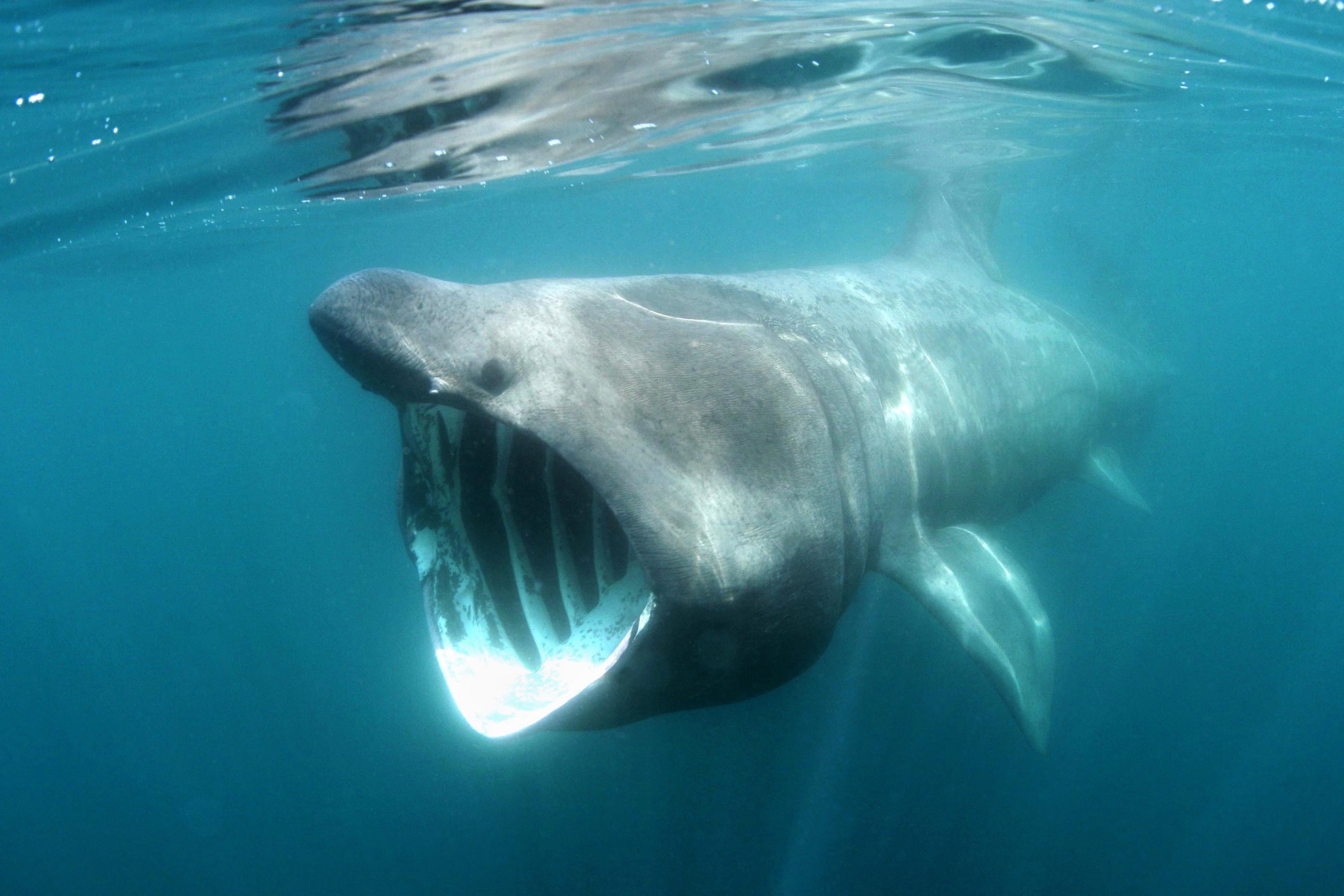
The basking shark is the second-largest shark in the world. It is also the second-largest fish ever. It can grow up to 40 ft. long and weighs around 8000 lbs. Given their massive size, they are not fast swimmers.
You’ll find basking sharks scattered across the globe. For instance, they inhabit European waters during the summer. They like to swim close to the surface. They are one of the types of sharks that humans often encounter. However, they are quite harmless to humans.
Basking sharks only feed on planktons and copepods. They swim with their mouths open wide and filter out any substances they don’t eat.
Blacktip Reef Shark
Scientific name: Carcharhinus melanopterus
Conservation status: Vulnerable
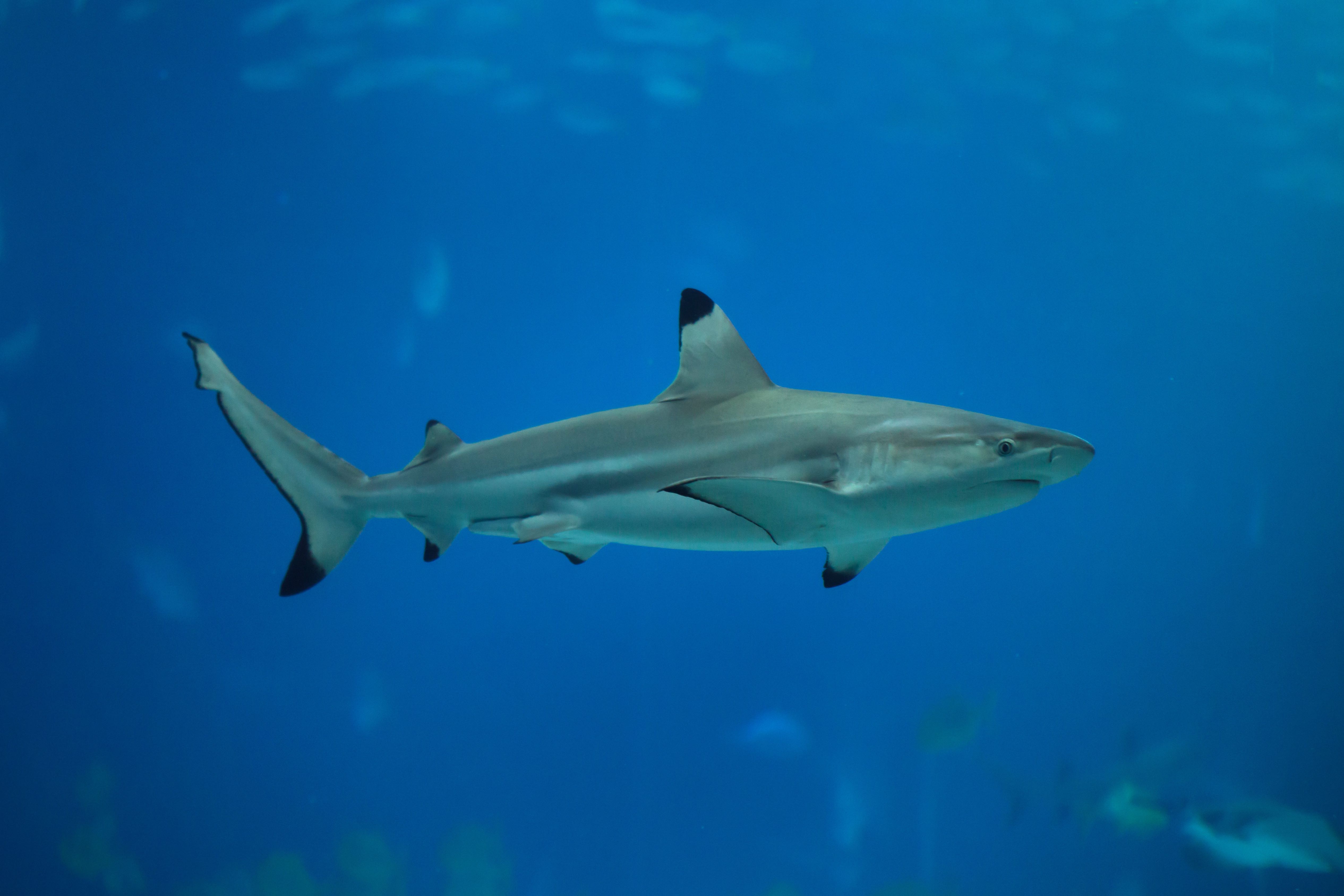
It’s easy to spot the blacktip reef shark among other types of sharks. As its name suggests, the tips of its fins are black. Blacktip reef sharks grow up to 5 ft. They weigh around 53 lbs. This makes them smaller than most sharks.
Blacktip reef sharks live close to reef ledges. They prefer shallow waters, so divers will often encounter them. Thankfully, they aren’t a threat to humans. These sharks prefer to eat small fish. They won’t attack humans unless threatened.
These sharks are capable of breaching. Breaching refers to jumping out of the water. Not all shark species can do this, but the blacktip reef shark can.
Blue Shark
Scientific name: Prionace glauca
Conservation status: Near threatened

The great blue shark, or simply blue shark, is one of the types of sharks that prefer cooler waters. When summer hits, they swim across oceans to migrate. For instance, these sharks will swim from Northern Europe all the way to South America.
Just as their name suggests, these sharks are color blue. Male blue sharks are around 6 ft long. They also weigh around 120 lbs. Female blue sharks are both longer and heavier than male blue sharks.
There are cases where these sharks have bitten divers. However, these are very rare. Overall, great blue sharks mostly keep to themselves and do not pose a threat to humans.
Bonnethead Shark
Scientific name: Sphyrna tiburo
Conservation status: Endangered
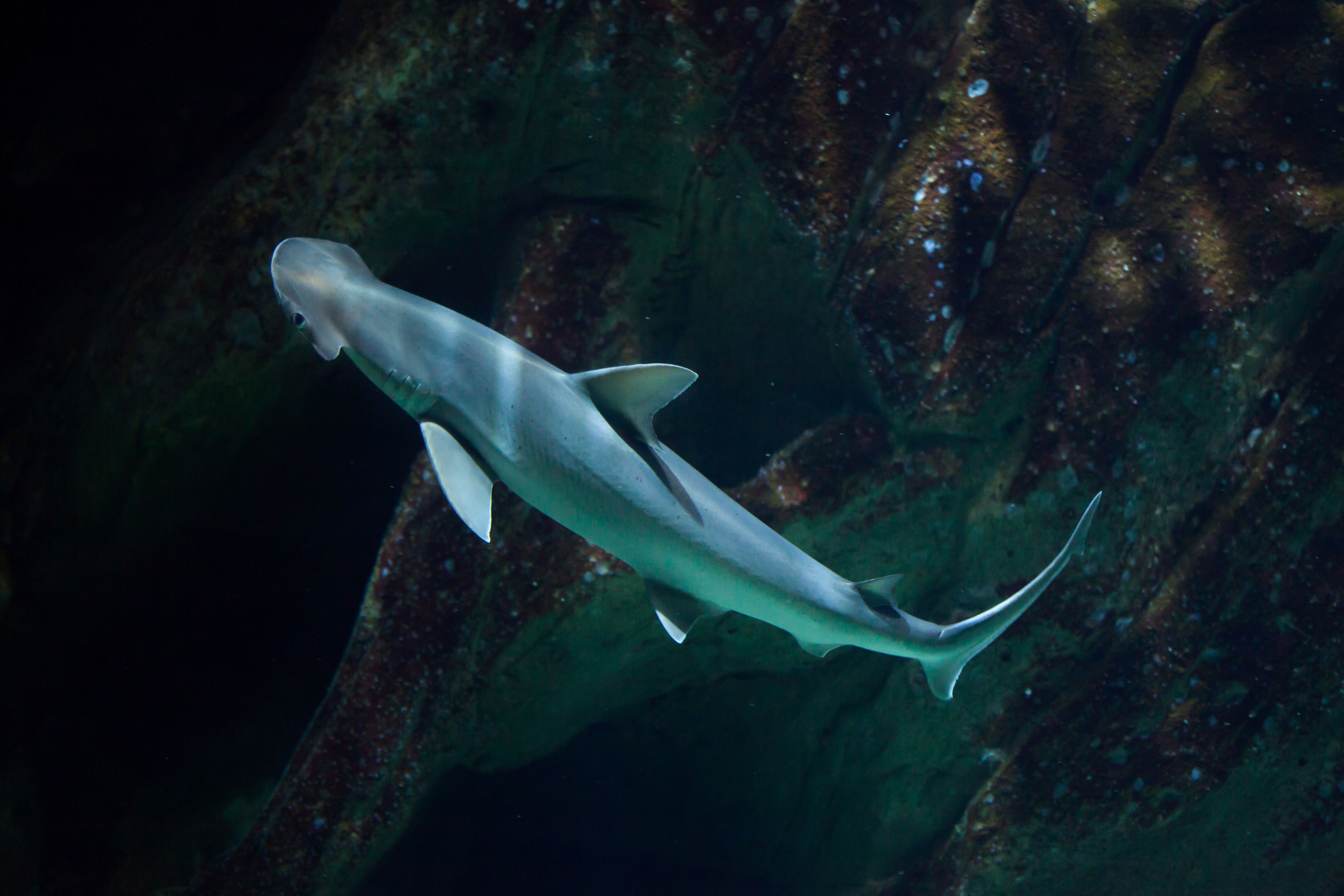
The bonnethead shark looks different from the sharks you see in films. This shark is one of the types of hammerhead sharks. The bonnethead shark does not have an elongated head. Instead, its head looks like a broad spade. They grow up to 5 ft long.
Unlike other types of sharks, the female and male bonnethead sharks greatly differ from each other. Female sharks have broad, rounded heads. On the other hand, males have noticeable bulges on their anterior.
Bonnethead sharks near the shores of the North Atlantic and the Gulf of Mexico. They also inhabit southern Californian waters and Brazil. They are harmless to humans and mostly eat small fish.
Bull Shark
Scientific name: Carcharhinus leaucas
Conservation status: Near threatened to vulnerable
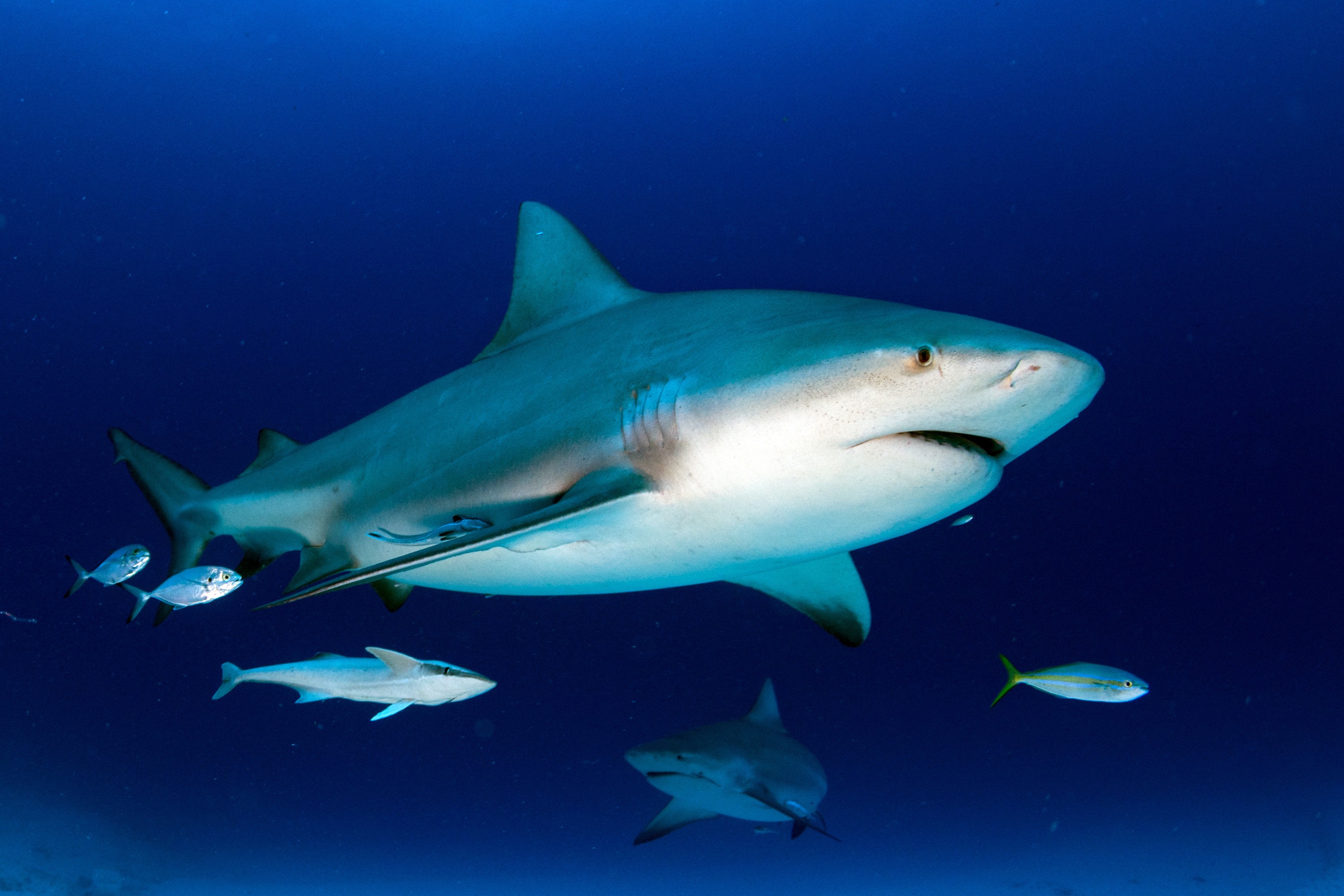
The bull shark is one of the most aggressive sharks ever. In fact, many believe bull sharks as one of the most likely shark types to attack humans. Bull sharks grow up to 11 ft long. They can weigh up to a hefty 500 lbs.
These aggressive sharks live near shorelines, where people live. Bull sharks are predatory, so they are fast hunters. They swim fast to catch their prey. Fish, dolphins, and smaller sharks are often their meals.
Some types of sharks will not attack humans unless threatened themselves. However, there are cases of bull sharks pursuing people despite being undisturbed.
Caribbean Reef Shark
Scientific name: Carcharhinus perezi
Conservation status: Endangered
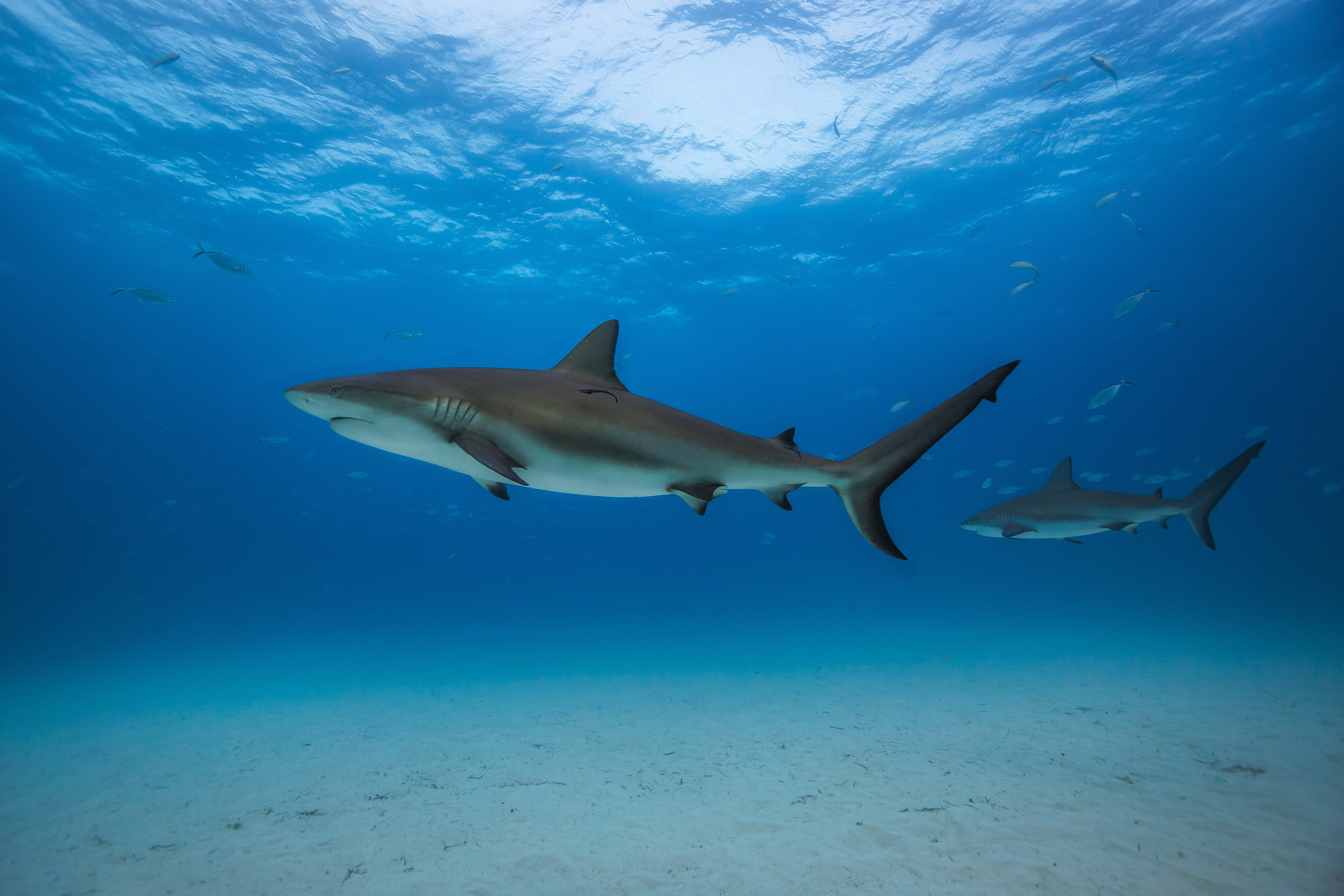
The Caribbean reef sharks have a short and rounded snout. They are a dark gray to a brownish gray. These sharks grow up to 9 ft long. According to records, the heaviest Caribbean reef shark weighed 150 lbs.
As the name suggests, these sharks live in the Caribbean Sea. They also inhabit the tropical waters of Florida and Brazil. Caribbean reef sharks feed on different kinds of fish. Some examples include octopuses and barracudas.
There are some cases of shark attacks from these species of sharks. However, this is mostly because fishers and divers often target and catch them.
Cookiecutter shark
Scientific name: Isistius brasiliensis
Conservation status: Least concern
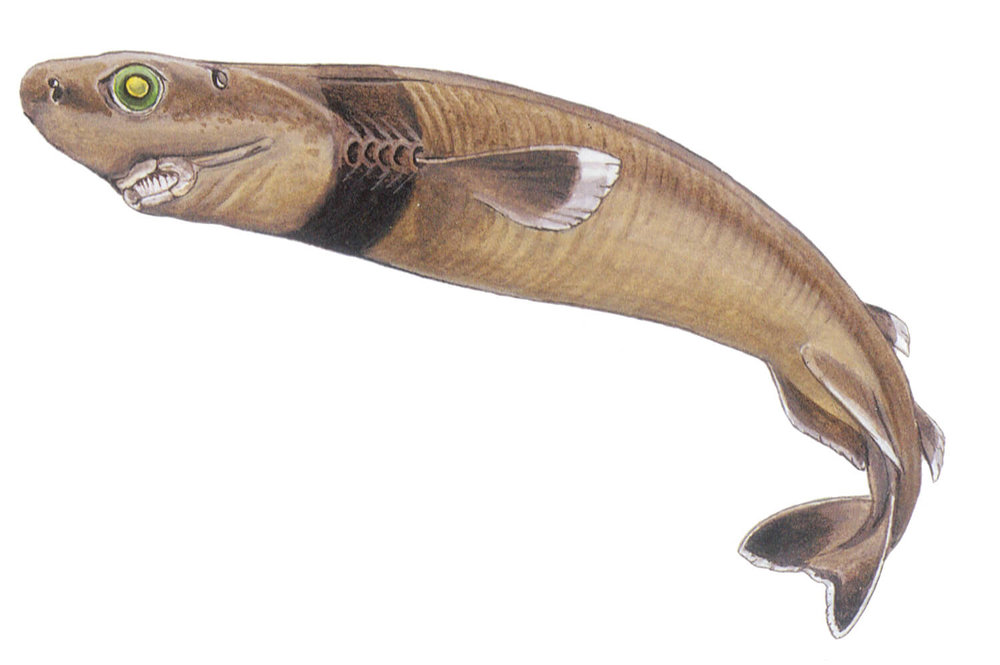
Most people think that all types of sharks are big, massive fish. However, some are so small that people might mistake them for other fish. The cookiecutter shark is an example of this.
The cookiecutter shark, or cigar shark, is a small shark. This small shark species will not grow past 20 inches long. Unlike other types of sharks, they will not feed on smaller fish. Instead, they are parasites that latch onto larger animals. They take small bites of their host’s skin, hence their “cookiecutter” name.
Some examples of fish that this shark feeds on are the bluefin tuna and great white sharks. It also feeds on spinner dolphins. You’ll find this shark type in warm oceans across the globe. South Africa, Australia, and Japan waters are some of its habitats.
Dwarf Lantern Shark
Scientific name: Etmopterus perryi
Conservation status: Least concern
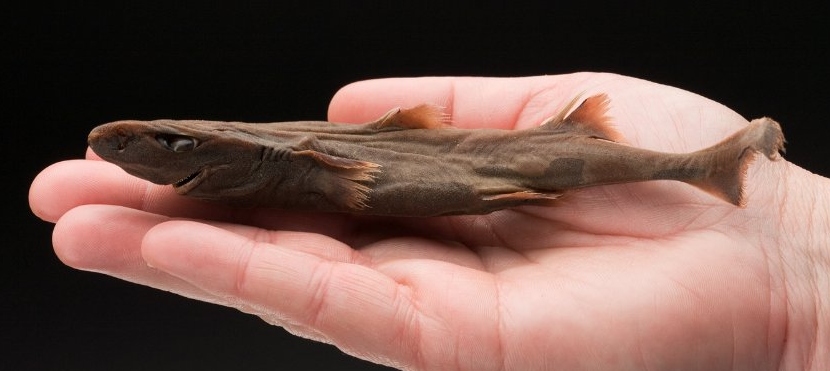
The smallest shark in the world is the dwarf lantern shark. This shark only grows up to 8 inches long. In fact, most of this shark species are smaller than the average size of an adult human’s hand.
The dwarf lantern shark has a long flattened head. Its body has black markings all over it. Another feature of these sharks is the photophores on their bellies and fins. Photophores are light-emitting organs that help them camouflage with the sunlight.
Scientists have not been able to study this shark species much. Thus, these sharks remain mysterious. Their diet, for instance, remains a mystery. However, scientists do know that these sharks live in South America.
Galapagos Shark
Scientific name: Carcharhinus galapagensis
Conservation status: Least concern
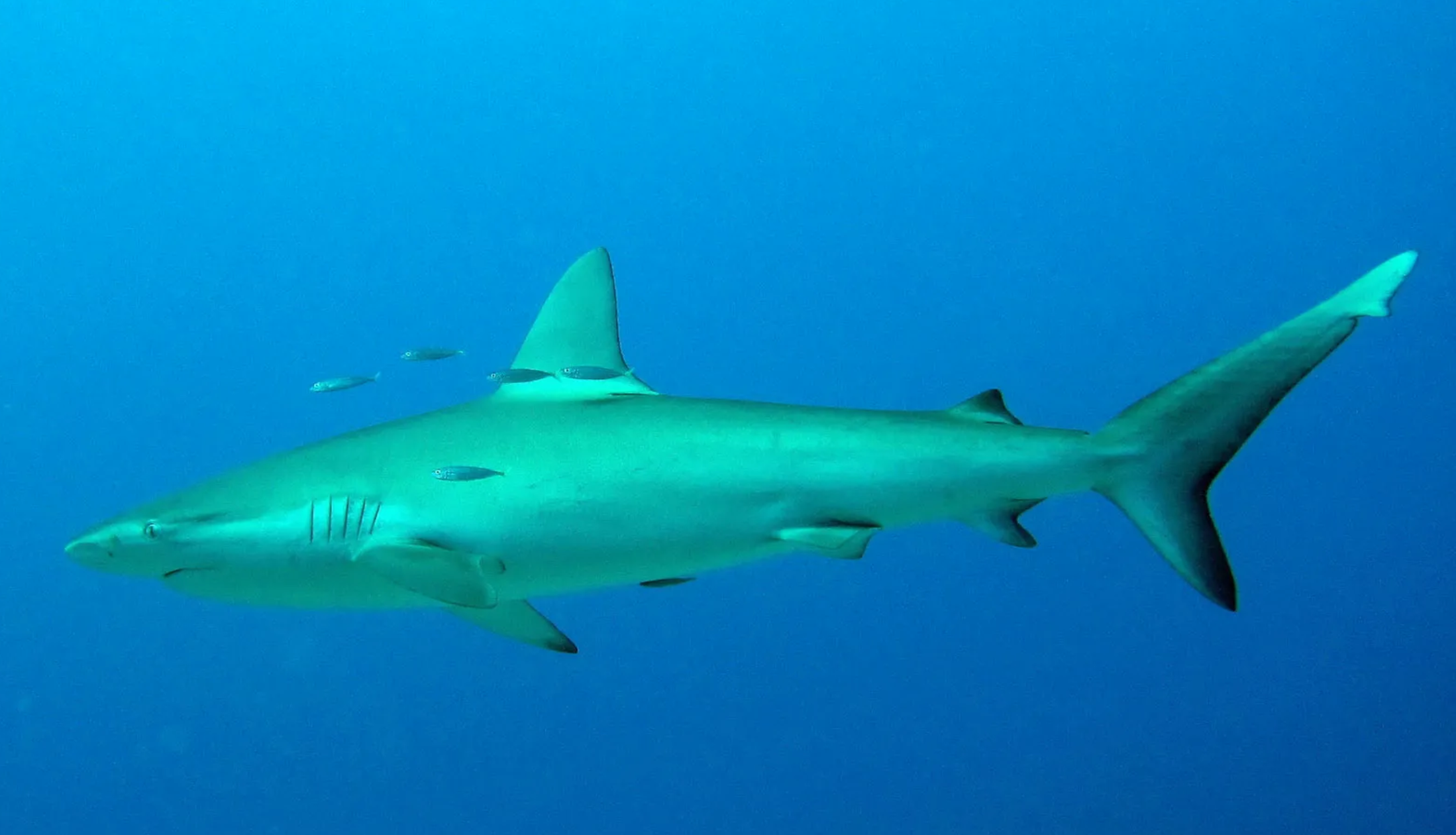
The Galapagos shark is one of the larger shark species out there. It grows up to 10 ft long. Another name for the Galapagos shark is the gray reef whaler.
These sharks prefer clear and warm waters. Galapagos sharks live in reefs across the Atlantic Ocean. They can also be found in the Pacific Ocean. The diet of this shark species comprises smaller bony fish. However, they also feed on other sharks, iguanas, and sea lions.
One feature that sets the Galapagos shark apart from other types of sharks is its tall dorsal fin. Its dorsal fin is taller than most sharks and with a rounded tip.
Goblin Shark
Scientific name: Mitsukurina owstoni
Conservation status: Least concern
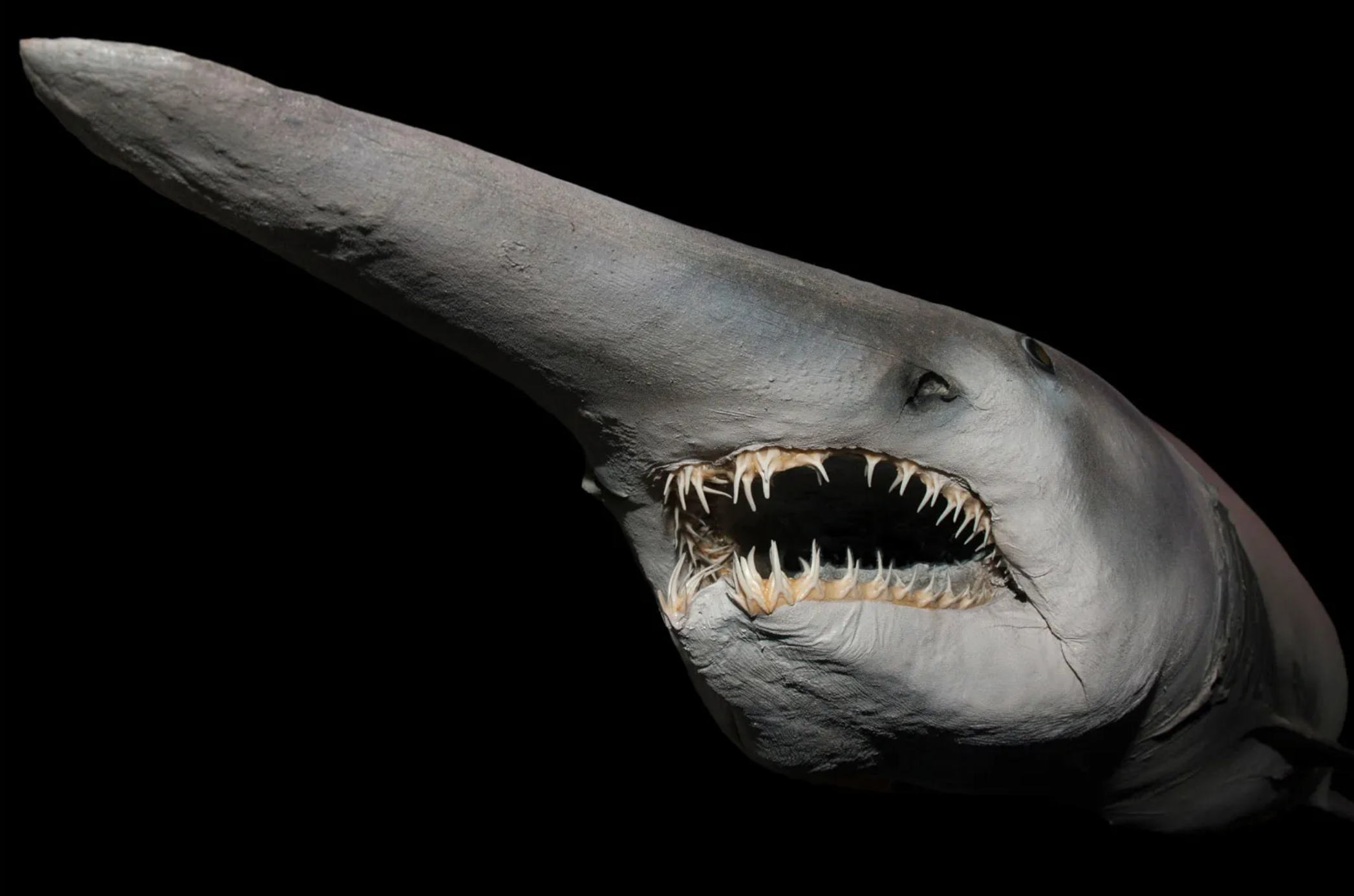
Among the different types of sharks, the goblin shark is a little less popular. This shark species is actually a rare species. In fact, some scientists call it a “living fossil.” The goblin shark is pink with a flat nose. Its average length is around 12 ft long.
One peculiar fact about this shark type is its ability to push its jaws forward. To catch prey, a goblin shark can push its jaw out of its mouth up to a distance of 3 inches. This helps the shark capture food like squid easily.
Goblin sharks live at the bottom of the ocean, so they have not been spotted often. However, some have seen them in Japan.
Gray Reef Shark
Scientific name: Carcharhinus amblyrhynchos
Conservation status: Near threatened to endangered
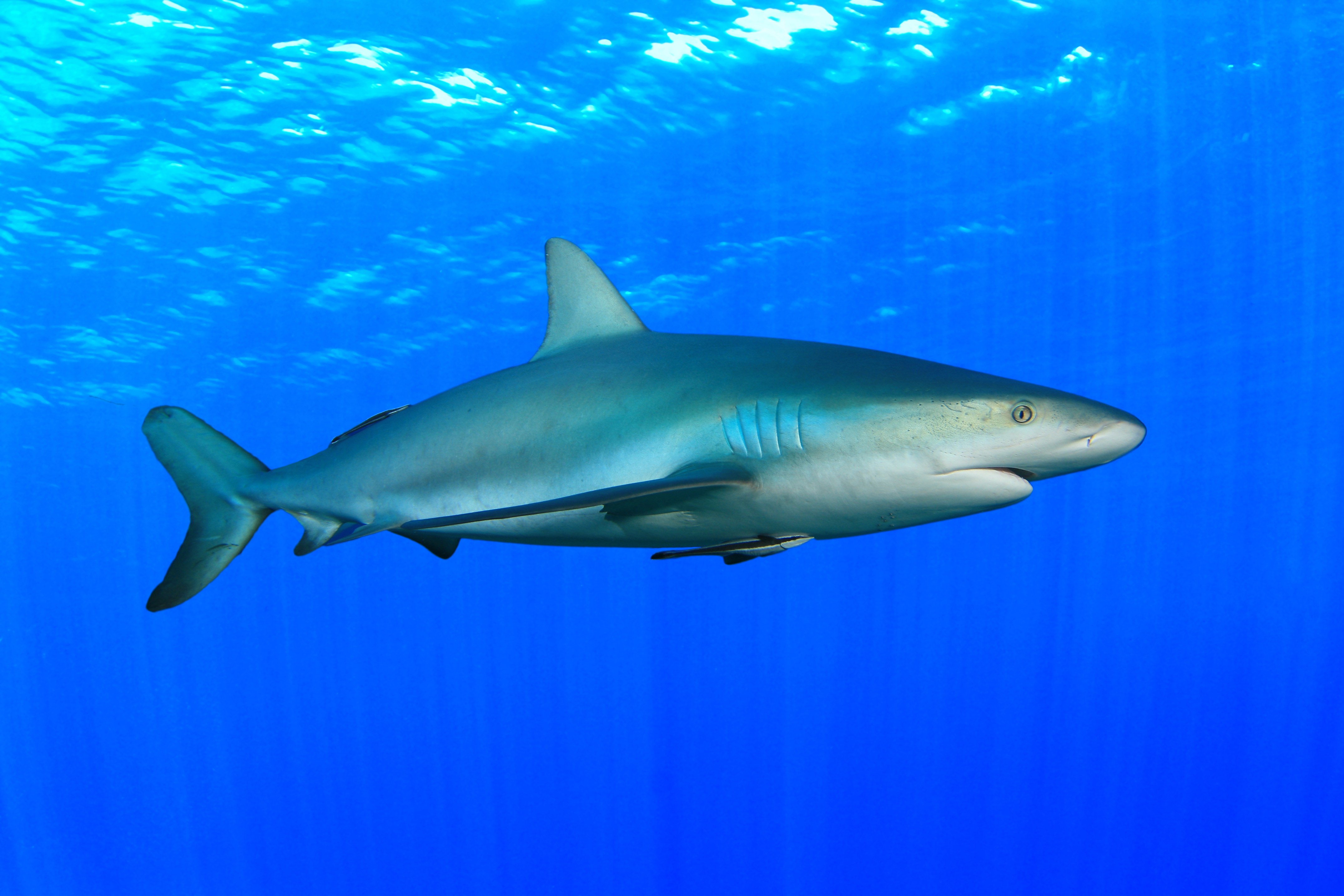
The gray reef shark, or grey reef shark, is a shark with large eyes and a round snout. This shark species are usually 6 ft long. They are fast swimmers, which makes them terrifying predators. They often feed on smaller bony fishes.
Gray reef sharks are types of sharks in the Indo-Pacific. They often live in shallow waters near coral reefs. These sharks swim in groups. They are also very territorial. They will often form a group of 5 to 20 sharks and comb through a specific area to hunt.
A lot of gray reef sharks live in the waters of the Hawaiian Islands. In Hawaiian folklore, they believed sharks were family deities that they had to worship and protect. Thus, those who believed in this could not catch or eat gray reef sharks.
Great White Shark
Scientific name: Carcharodon carcharias
Conservation status: Vulnerable
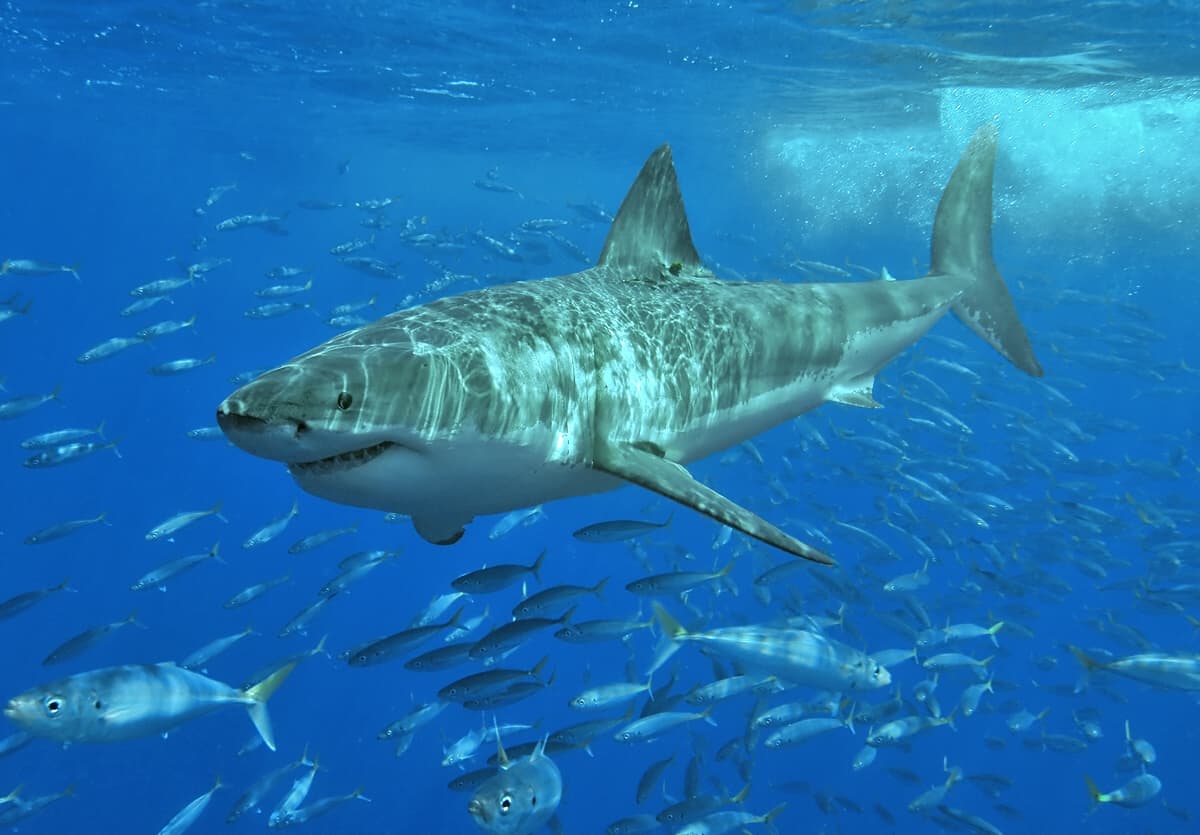
The great white shark has many names. Some know it as the white shark, while some call it the white pointer. To many, it is the terrifying shark from the 1975 film Jaws.
The great white shark is a mackerel shark that lives in all of the major oceans of the world. It grows up to 20 ft long and weighs around 4,000 lbs. This apex predator can swim at a speed of 25 km/hr. They feed on some of the largest fish in the ocean. This includes whales and smaller types of sharks.
Great white sharks are responsible for most of the shark attacks reported everywhere. However, most of these cases are not fatal. Often, great white sharks will bite a human out of curiosity but back away afterward.
Hammerhead Shark
Scientific name: Sphyrnidae
Conservation status: Vulnerable to endangered
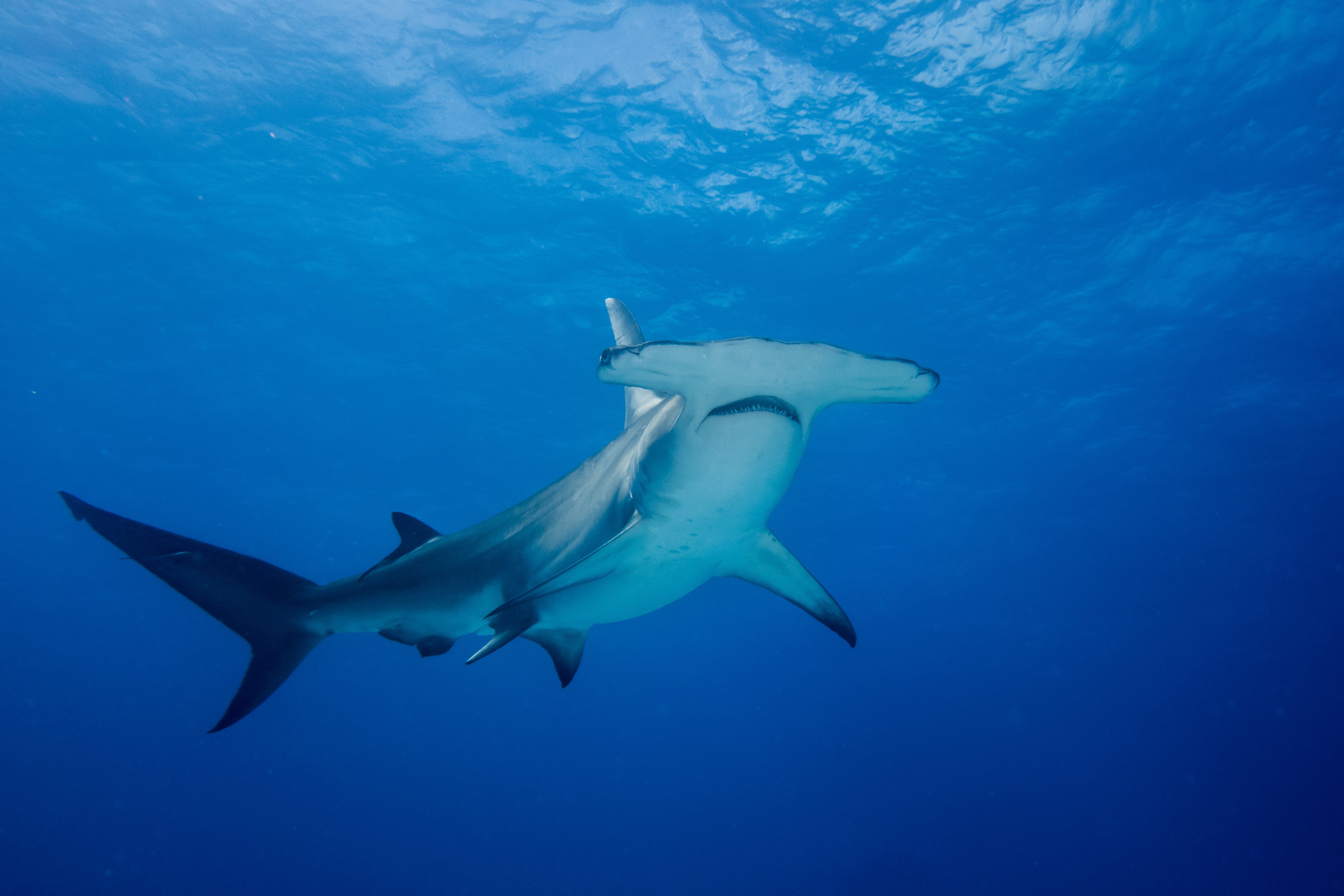
The hammerhead shark’s head shape differs from other types of sharks. Cephalofoil refers to this shark’s “hammer” head. It is unique and flattened like a mallet. This unique feature gives hammerhead sharks important hunting skills.
For instance, they can see their surroundings much better. They can also identify their prey even from afar. Given these features, hammerheads are some of the best predators in the ocean. This is unfortunate for stingrays, which hammerheads like to prey on.
Hammerhead sharks grow up to 20 ft long. They weigh an average of 500 to 1,000 lbs. They are indeed very scary creatures, but they are quite harmless to humans. There are few recorded cases of shark attacks from these shark types.
Lemon Shark
Scientific name: Negaprion brevirostris
Conservation status: Vulnerable
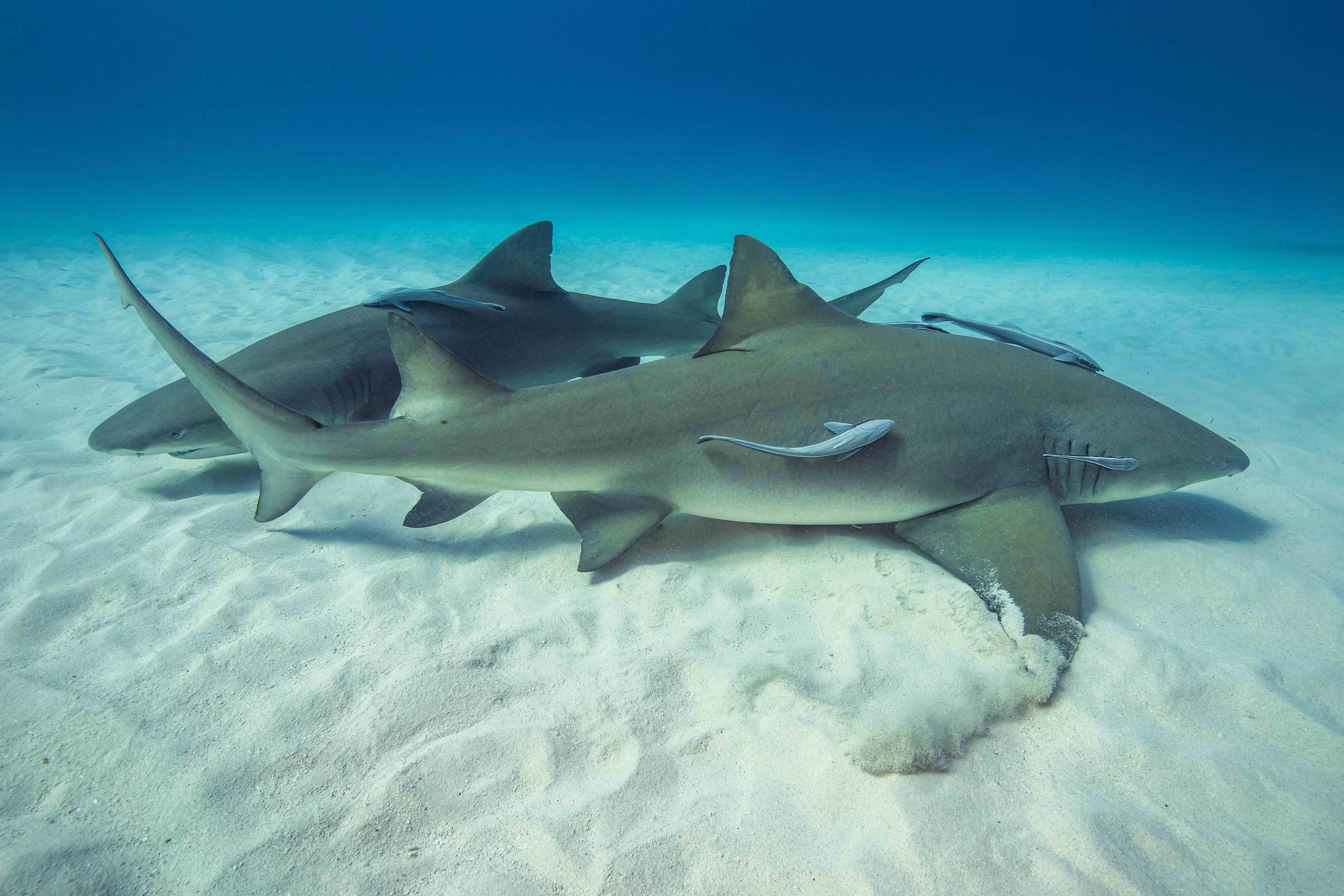
The lemon shark is one of the larger types of shark. Female lemon sharks can grow up to 11 ft. long, and they weigh around 400 lbs. On the other hand, male lemon sharks are usually 8 ft. long and weigh around 200 lbs.
Lemon sharks inhabit the waters of New Jersey. They also live in southern Brazil and west Africa. They prefer shallow waters with coral reefs and mangroves. Still, these sharks are capable of living deep in the ocean. Scientists have recorded sightings of them as deep as 301 ft. below the ocean.
One unique fact about lemon sharks is that they are viviparous. Unlike most types of sharks, they give birth to live baby sharks instead of laying eggs.
Leopard Shark
Scientific name: Triakis semifasciata
Conservation status: Least concern
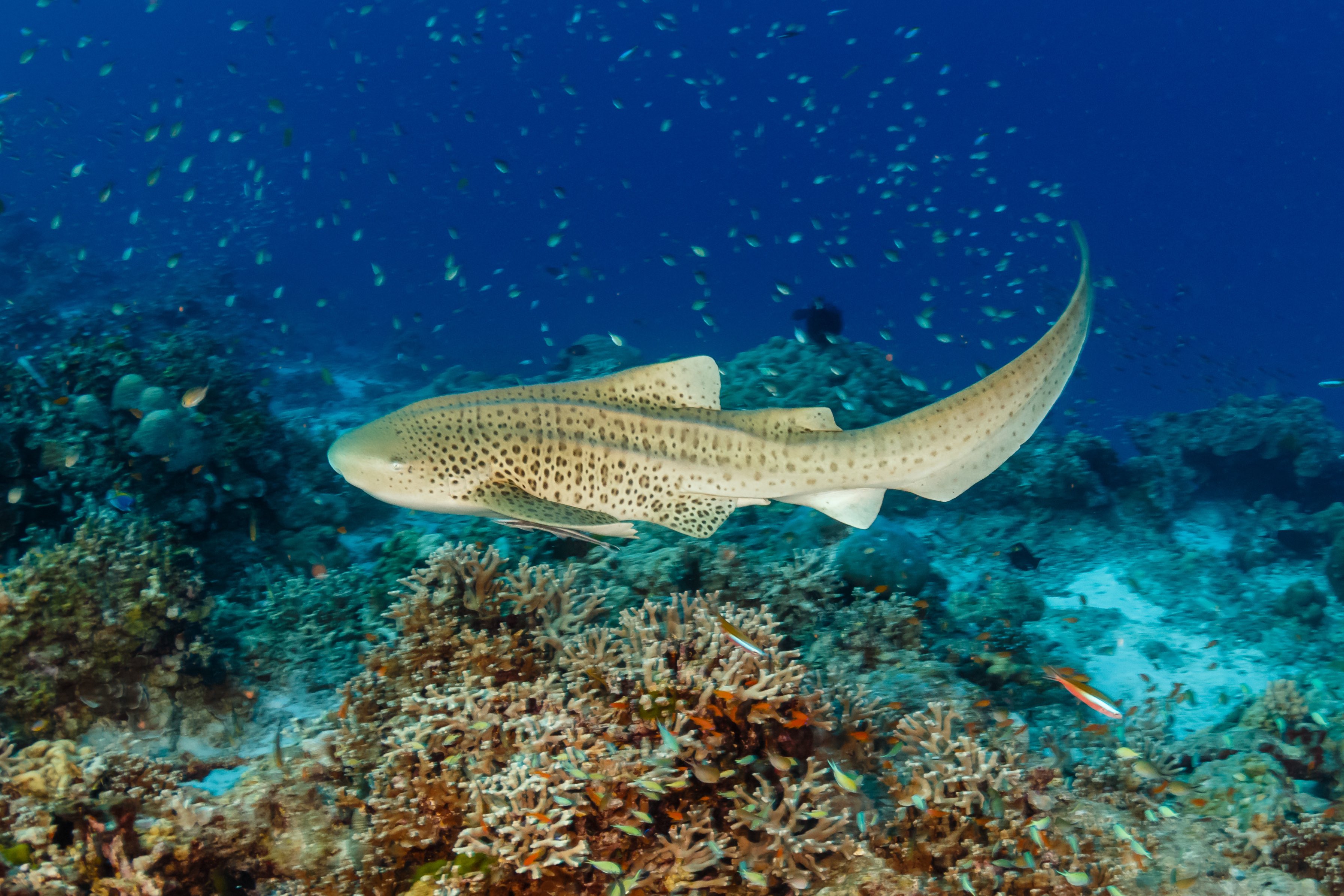
Leopard sharks are slender sharks that grow up to 4 to 6 ft. long. They weigh around 40 lbs. You can easily distinguish the leopard shark from other types of sharks. Just like its namesake, the leopard shark has black stripes and spots covering its back. These markings resemble a leopard’s.
The leopard shark lives along the Pacific coast of North America. They swim in groups, and they follow the tide when hunting for prey. These predators feed on crabs, shrimps, and other smaller fish they encounter.
Leopard sharks are not dangerous to humans. In fact, a lot of people catch leopard sharks during fishing trips. Thankfully, their population is not in danger. As long as overfishing does not happen, leopard sharks are safe.
Night Shark
Scientific name: Carcharhinus signatus
Conservation status: Vulnerable to endangered
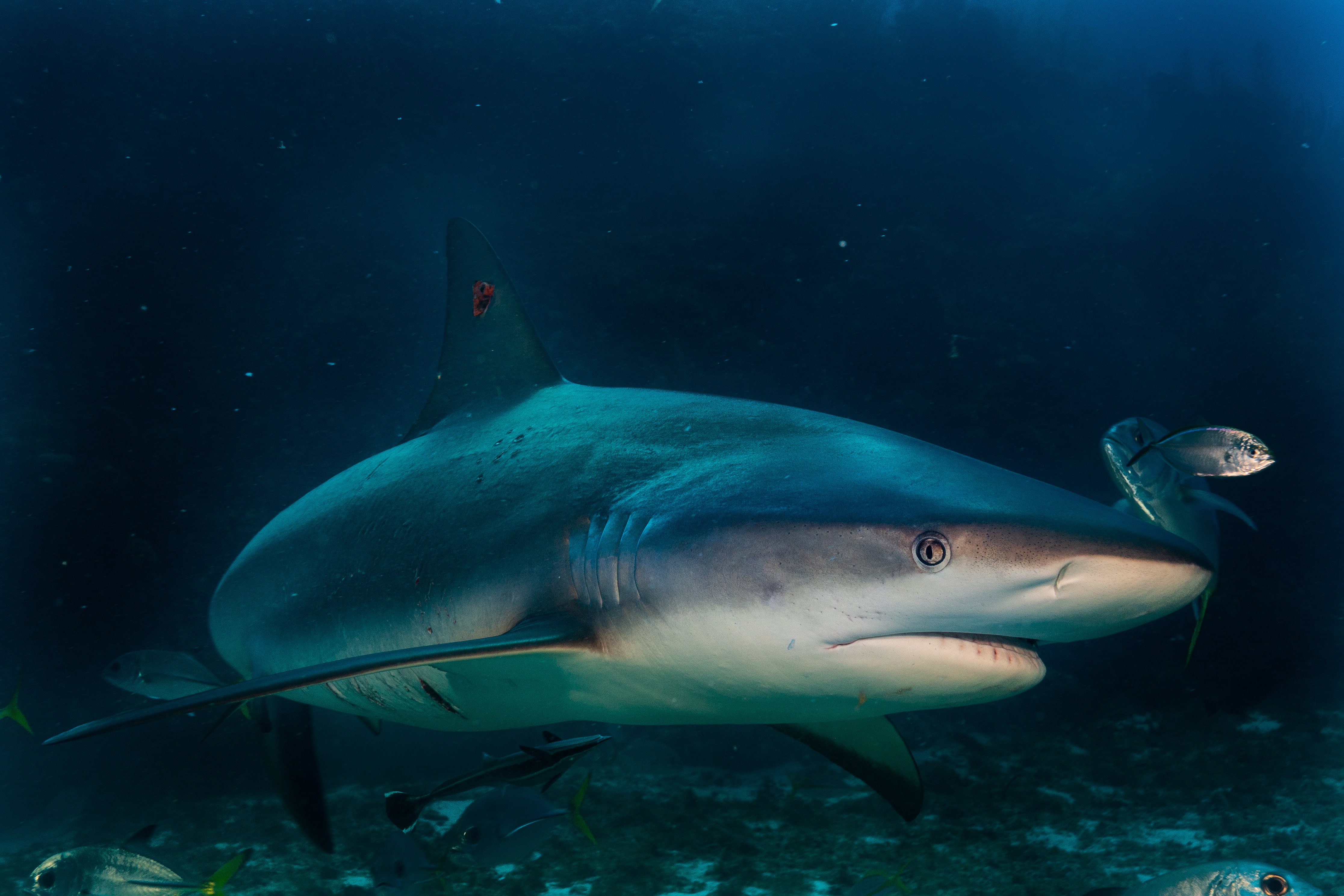
Night sharks can grow up to 9 ft. long and weigh around 170 lbs. They have slender bodies, and their snouts are long and pointed. One distinct feature that sets them apart from other types of sharks is their large green eyes.
Night sharks can be found in northeastern Brazil. During the day, they stay in deeper waters. Meanwhile, during the night, they often swim in shallower waters. They are also more active during the night. Just as their name suggests, they go out to hunt and swim at night time.
Unfortunately, night sharks are currently endangered. The market greatly values the meat, liver oil, and fins of night sharks. They also reproduce slowly, so their population is currently low, especially in the United States.
Nurse Shark
Scientific name: Ginglymostoma cirratum
Conservation status: Vulnerable
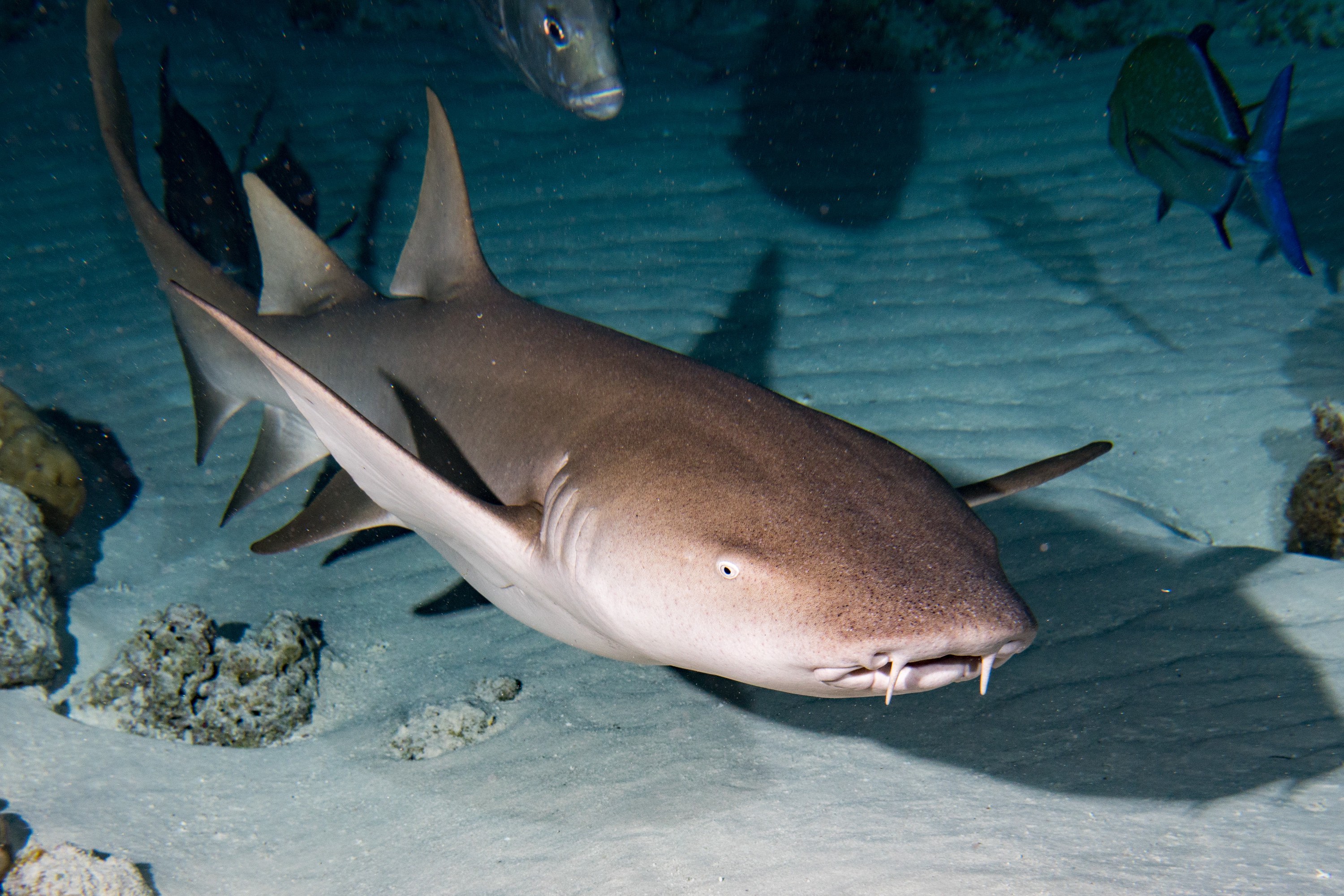
The nurse shark is another example of a shark type. They are around 7.5 to 9.5 ft. long, and they weigh around 200 to 330 lbs. Unlike most predators, nurse sharks are slow swimmers. However, they are still carnivorous predators. They feast on smaller fish, squid, and shrimp.
To humans, they are quite harmless. They won’t attack on sight. Despite being less aggressive than other types of sharks, nurse sharks rank high on the most documented cases of shark bites. This is likely because they live near populated areas in Central and South America. It is more common for divers and fishers to stumble upon them.
Another distinct feature of the nurse shark is its smooth skin. Most shark species have rough and bumpy skin. The nurse shark, on the other hand, is smooth to the touch.
Ocean Whitetip Shark
Scientific name: Carcharhinus longimanus
Conservation status: Critically endangered

Ocean whitetip sharks are big and stocky. The tips of their fins are colored white. According to records, the biggest ocean whitetip shark ever caught was 13 ft. long. It weighed 370 lbs.
Out of the different types of sharks, the ocean whitetip shark wins as the most aggressive. They are some of the scariest sharks, and they will often attack divers even if they weren’t disturbed. They are deadly, and they lurk in deep, cold waters across the globe.
Other names for the ocean whitetip shark include Brown Milbert’s sand bar shark and brown shark. Lesser white shark, nigano shark, and silvertip shark are also some more examples.
Pacific Sleeper Shark
Scientific name: Somniosus pacificus
Conservation status: Data Deficient

The Pacific sleeper shark is an example of a sleeper shark. Sleeper sharks are types of sharks that are non-aggressive, slow swimmers, and almost sedentary. They are less active than other sharks.
Most Pacific sleeper sharks are around 12 ft. long. On average, they weigh around 700–800 lbs. Despite being one of the biggest sharks, they are still prey to other animals. For instance, killer whales are known to eat them.
Pacific sleeper sharks live in cold waters in the North Pacific. They have been found in Alaska, where they feed on hermit crabs, squids, and salmon.
Pocket Shark
Scientific name: Mollisquama parini
Conservation status: Least Concern
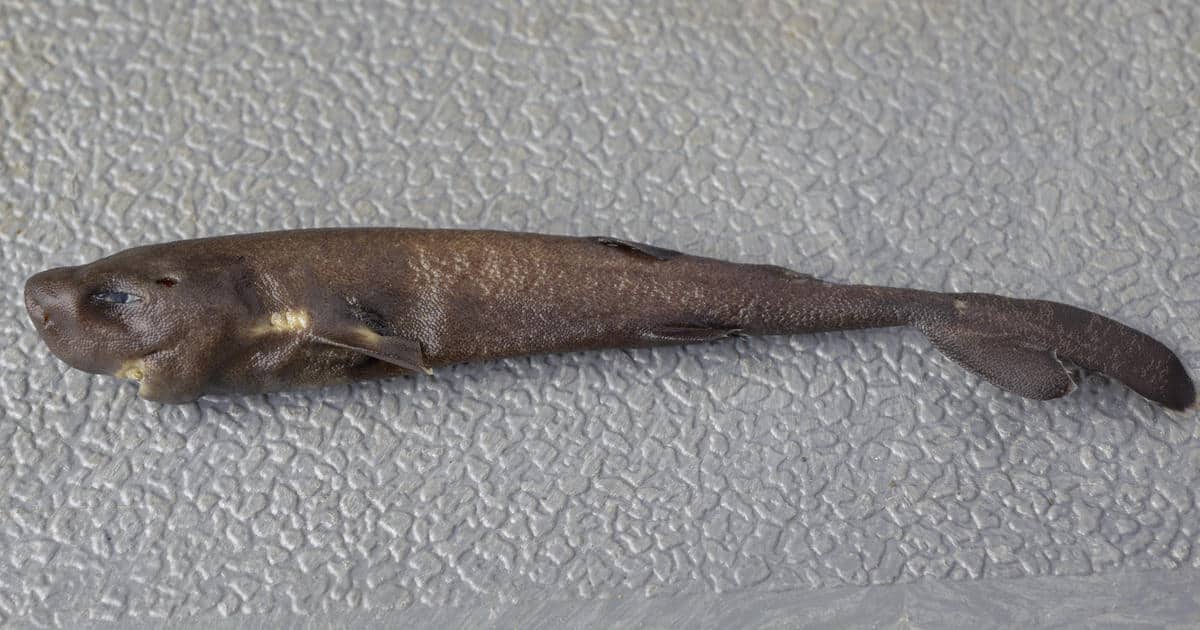
The pocket shark is one of the types of sharks that live in the waters of Chile. They are smaller than most sharks. They can grow up to 6 ft. long. However, they are usually smaller than that.
Despite popular belief, scientists did not call these sharks “pocket sharks” because they are pocket-sized. While they are quite small, their name comes from the fact that they have pockets. These pockets are glands on their pectoral fins. Scientists have not conducted enough research to figure out the purpose of these glands.
There is also not enough data to determine whether they are threats to humans. However, so far, no violent cases have been reported.
Sandbar Shark
Scientific name: Carcharhinus plumbeus
Conservation status: Endangered
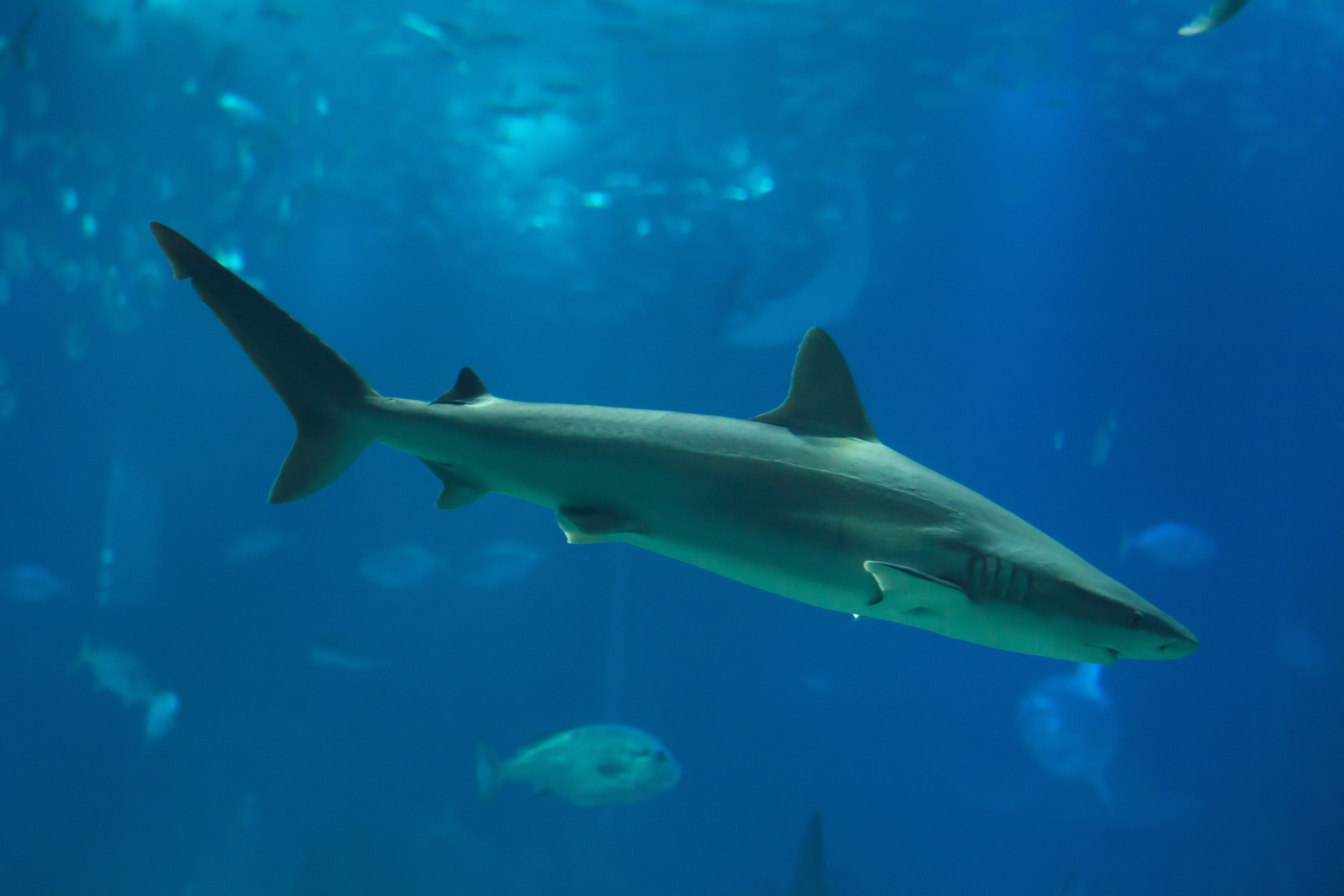
The sandbar shark stands out from other types of sharks. Aside from its brown color, the sandbar shark has a very high and pointy dorsal fin. Its pectoral fins are also very long. Most sandbar sharks grow up to 8 ft. long. They weigh around 100–200 lbs.
Sandbar sharks live across the globe. Some of them inhabit the Bahamas, Cuba, and the Red Sea. They often live in bays and river mouths, where they feed on smaller fish and crabs.
Some people mistake the sandbar shark with the sand tiger shark. However, these two are different. The other names for the sandbar shark are thick skin shark or brown shark.
Sand Tiger Shark
Scientific name: Carcharias taurus
Conservation status: Critically endangered

The sand tiger shark is a shark with reddish-brown spots on its body. It has a long, bulky body that points into a sharp head. Most sand tiger sharks grow up to 6.5 to 10.5 ft. long and weigh anywhere between 200 to 350 lbs.
Sand tiger sharks live in the waters of North and South America. This species also inhabits Japanese, Australian, and South African waters.
This shark’s name might suggest that it is related to other types of sharks. However, the sand tiger shark is not actually related to the nurse shark nor the tiger shark. One thing that sets this shark apart from other shark species is its ability to gulp air from the surface.
Shortfin Mako Shark
Scientific name: Isurus oxyrinchus
Conservation status: Endangered
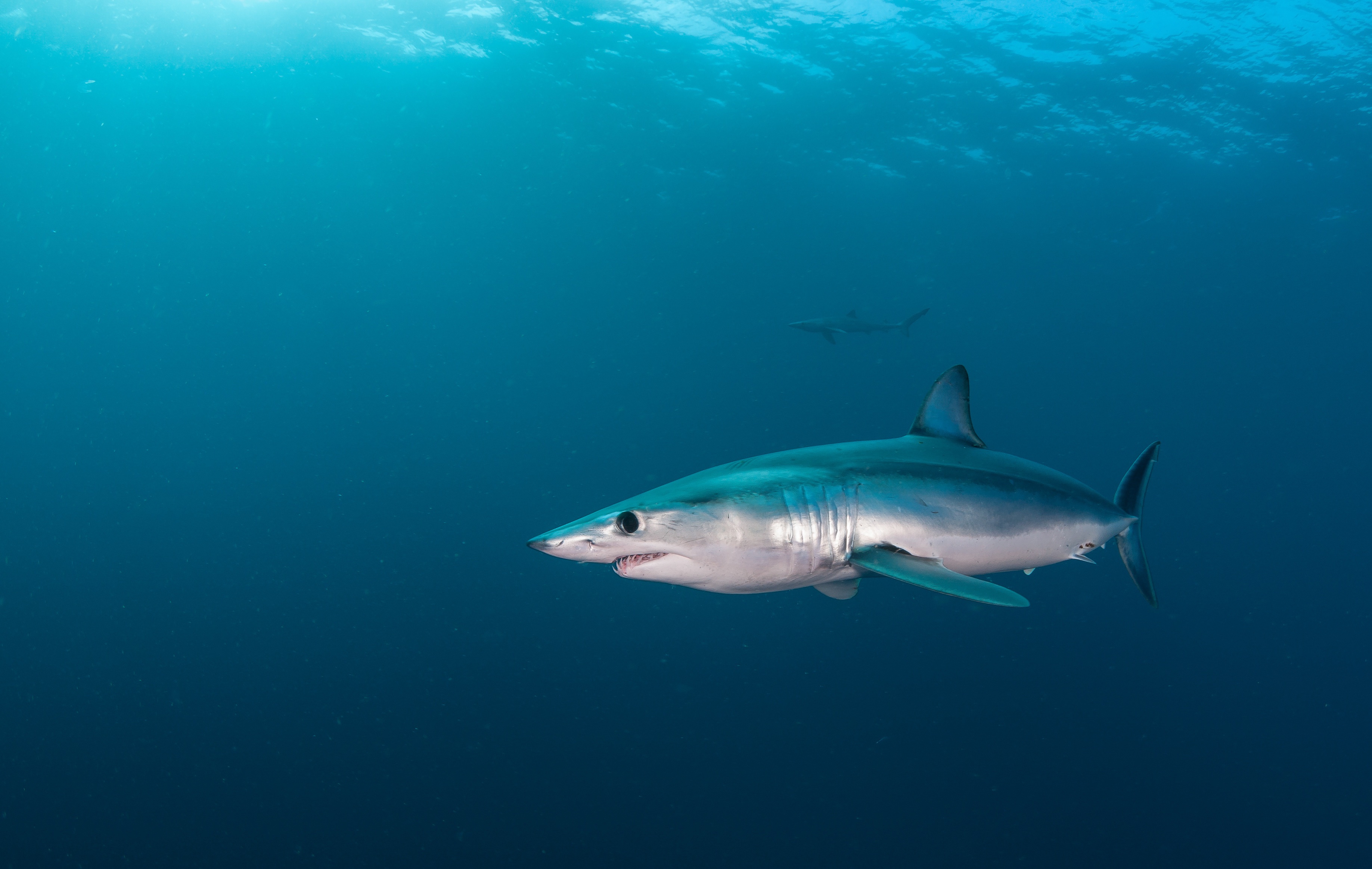
Compared to the other types of sharks, the shortfin mako shark is quite big. Most shortfin mako sharks can grow up to 12 ft. They can also weigh up to 1200 lbs. These sharks inhabit the offshore waters of New Zealand and Maine. They can also be found in Argentina.
These sharks are aggressive predators. Furthermore, they are very fast swimmers. They can swim at 45 mph. In fact, the shortfin mako is the fastest shark ever. Aside from being a fast swimmer, shortfin mako sharks can also jump out of the water.
This is not something a lot of sharks can do. In fact, only a few can breach the water’s surface like that. This makes the shortfin mako shark a scary predator.
Silky Shark
Scientific name: Carcharhinus falciformis
Conservation status: Vulnerable

The silky shark can grow up to 11 ft. and weigh around 700 lbs. While these sharks are large, they have long, slender bodies. Their snouts are long and flat as well.
These sharks occupy the waters of China and South Africa. In the eastern Atlantic, they can be found in the waters near Spain. Unlike other types of sharks, they don’t swim in groups. However, if they will travel to migrate, you can chance upon a group of silky sharks.
The silky shark also has other names. Some examples are blackspot shark, ridgeback shark, and sickle shark. Some also call them grey whaler sharks or olive sharks. For fishers, they often call them “net-eater sharks” because they like to tear apart tuna fishing nets.
Tiger Shark
Scientific name: Galeocerdo cuvier
Conservation status: Near threatened
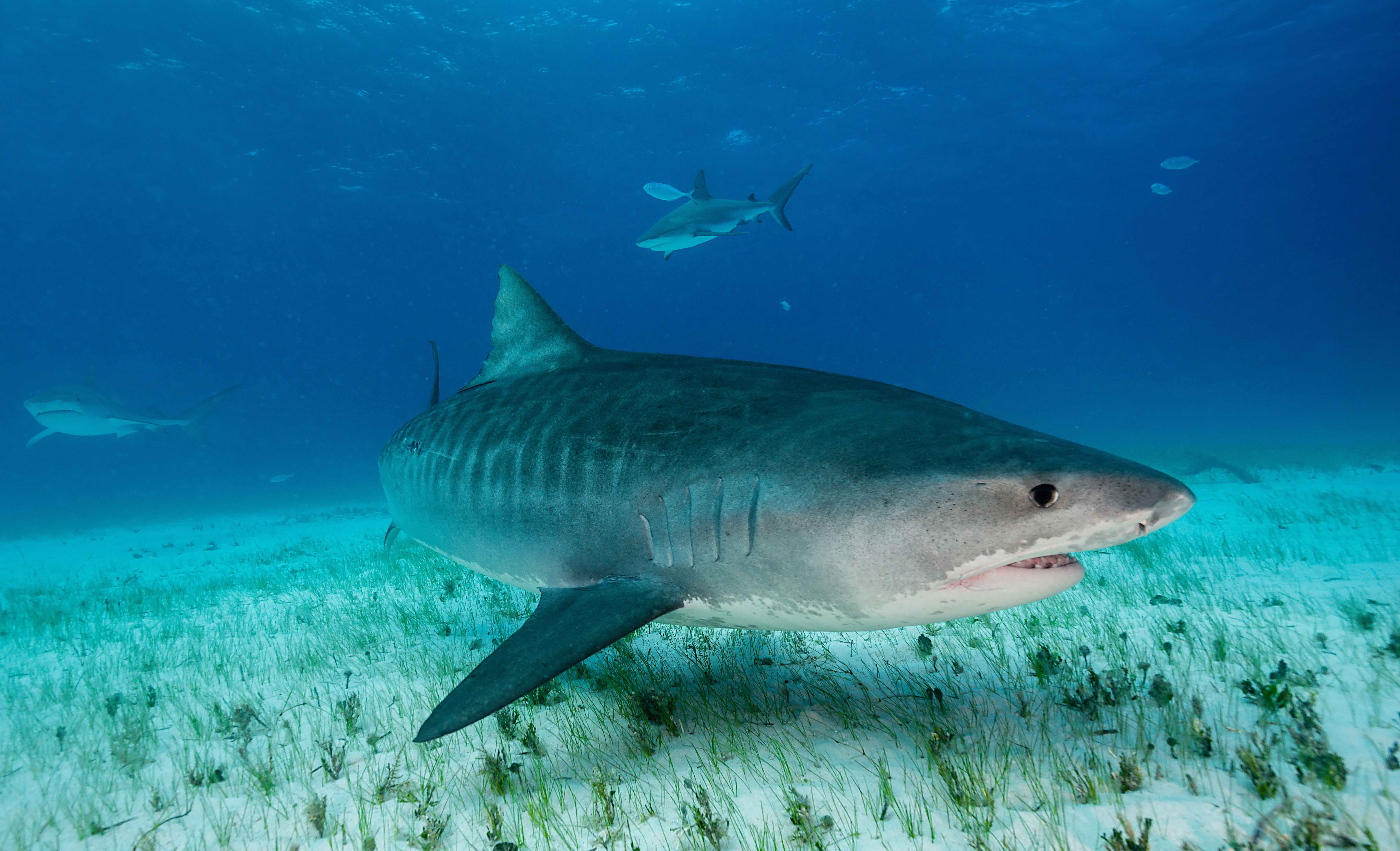
The tiger shark is the only surviving species of the genus Galocerdo. Thus, it is not related to other spotted sharks. Tiger sharks are some of the biggest sharks in the ocean. They can grow up to 16 ft. Their average weight is anywhere between 850 to 1400 lbs.
Like tigers, these sharks have dark vertical stripes on their bodies. However, these marks fade as they grow older. Thus, most adult sharks only have faded or light marks across their backs.
Another similarity these sharks have with their namesakes is their predatory instincts. There are many cases of tiger sharks attacking humans. In fact, they rank second in the highest number of shark attacks. Unlike great white sharks, these sharks are not picky eaters. Once they bite a human, they won’t swim away after a taste.
Thresher Shark
Scientific name: Alopias
Conservation status: Vulnerable

Thresher sharks occupy waters of the eastern Pacific and Atlantic. There are three types of thresher sharks. The most popular among these is the long-tailed thresher. The long-tailed thresher, or fox shark, grows up to 20 ft. long. Just like their name suggests, these sharks have long, distinct tails that look like scythes.
These sharks use their tails to their advantage. When hunting, they use their tails to herd prey into groups. They also thrash their tail in the water to scare prey to flee in a certain direction.
Like other types of sharks, they pose little to no threat to humans. Despite this, their numbers are still dwindling. This is because thresher sharks are popular catches for sport fish. People catch them for their meat, liver oil, and fins. Aside from this, people also use thresher sharks’ skin for leather material.
Whale Shark
Scientific name: Rhincodon typus
Conservation status: Endangered
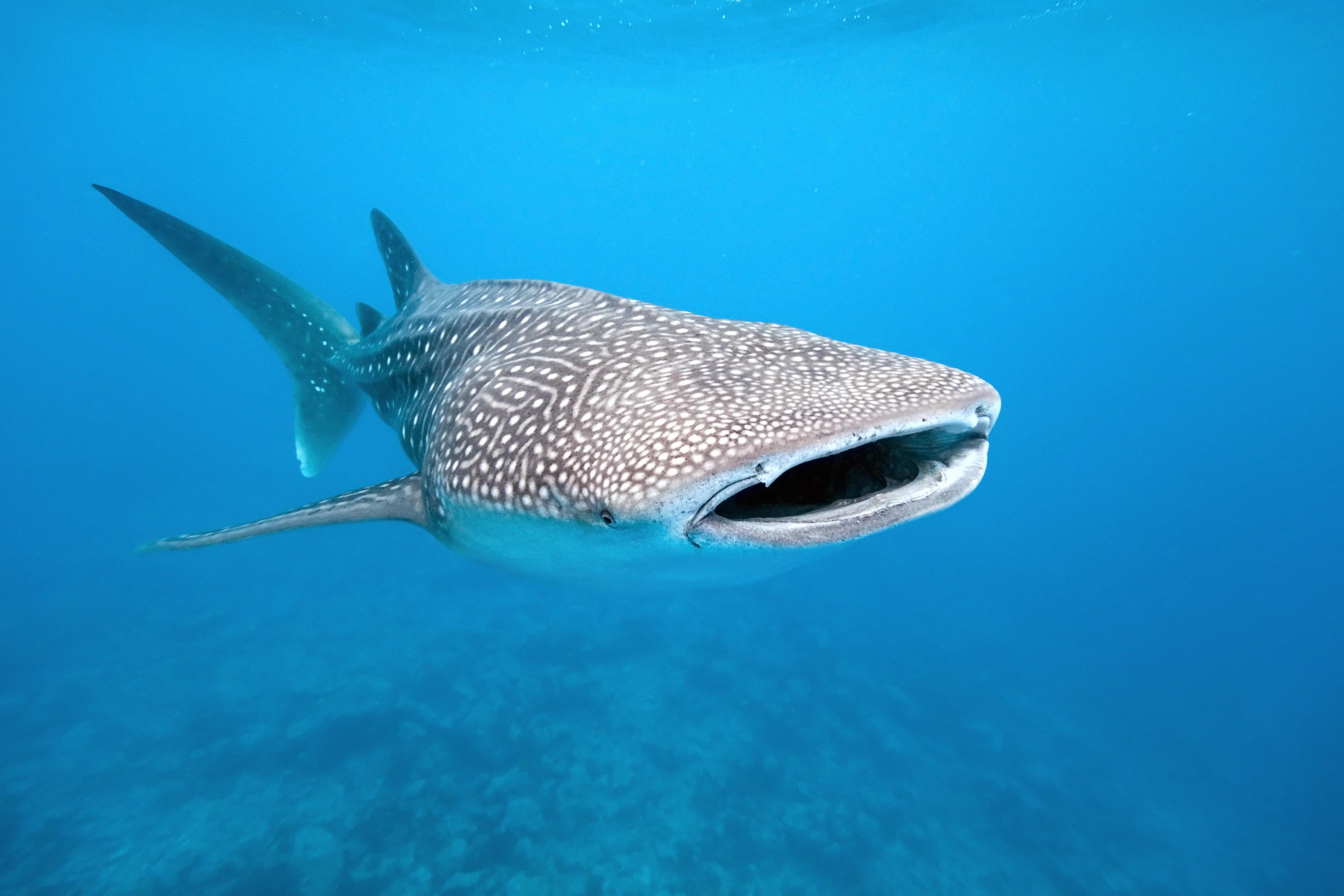
Some people might mistake the whale shark for killer whales. These two fish are not the same.
Whale sharks are the largest fish in the sea. Their lengths range from 18 to 40 ft., and they weigh around 20.6 tons. They have enormous mouths with filter pads. As filter feeders, they swim with their jaws wide open. The filter pads then strain or filter out any waste and only keep their prey. Whale sharks only feed on planktons and small fish.
Thus, whale sharks pose no threats to humans. They will not attack you. Plus, like the larger types of sharks, whale sharks are slow swimmers. They occupy tropical oceans and are rarely found in colder temperatures.
Wobbegong Shark
Scientific name: Orectolobus
Conservation status: Least concern
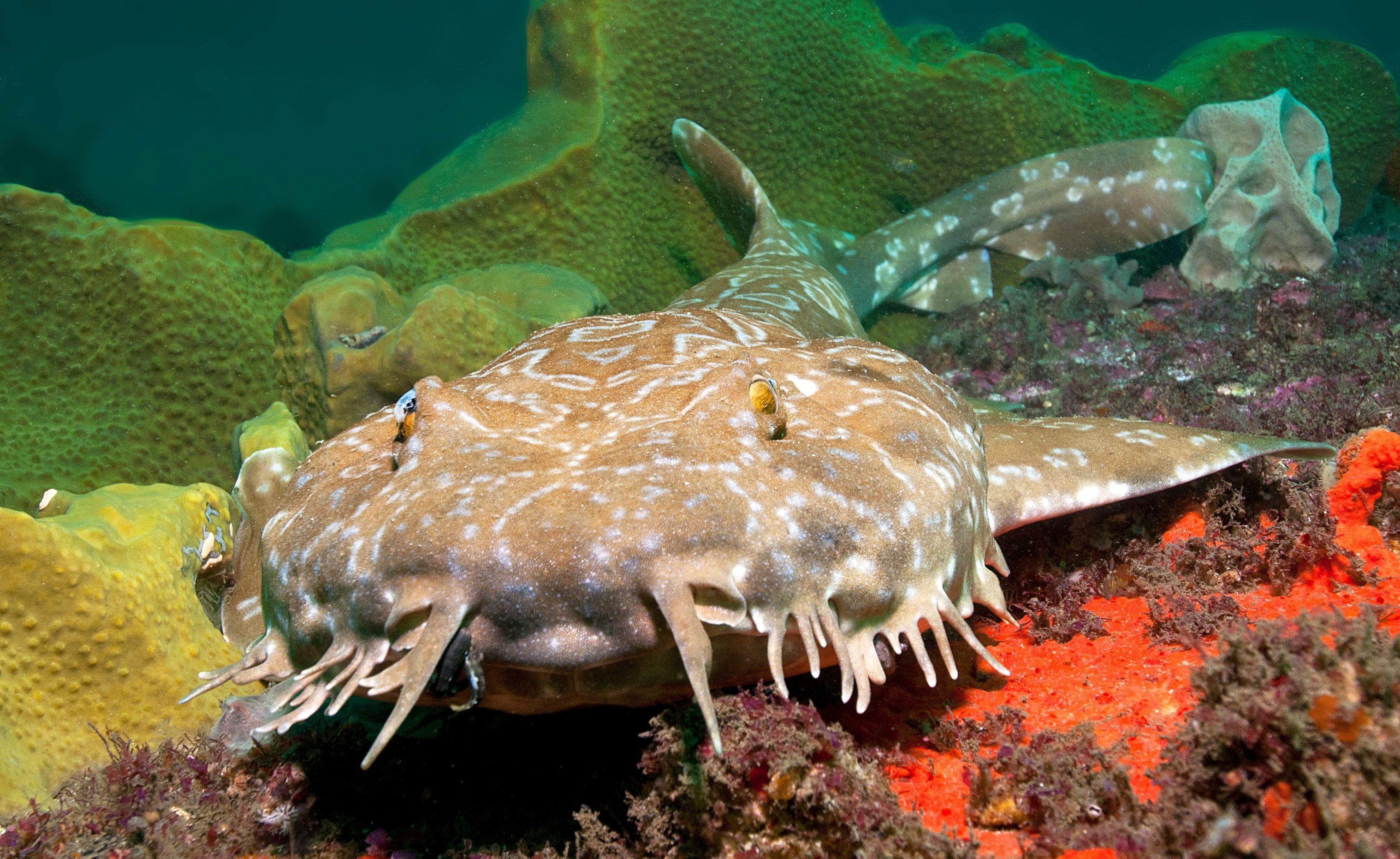
Wobbegong sharks refer to carpet sharks. They are bottom-dwelling sharks. Thus, they live near the seafloor. There are different types of sharks in this subgroup. Some examples are the Japanese wobbegong and the spotted wobbegongs.
Most of these species grow up to 4 ft. long. However, the largest wobbegongs can also reach around 10 ft. The largest wobbegongs are the spotted wobbegong. Aside from being the largest, spotted wobbegongs are also “camouflage masters.” Their spotted backs help them blend in with reefs.
Despite having powerful jaws, wobbegongs do not use them against humans. There are some cases of shark attacks from wobbegongs. However, these are only when surfers and divers come too close to them. Since they live near the seafloor, it’s important for divers to be cautious.
Zebra Shark
Scientific name: Stegostoma tigrinum
Conservation status: Endangered
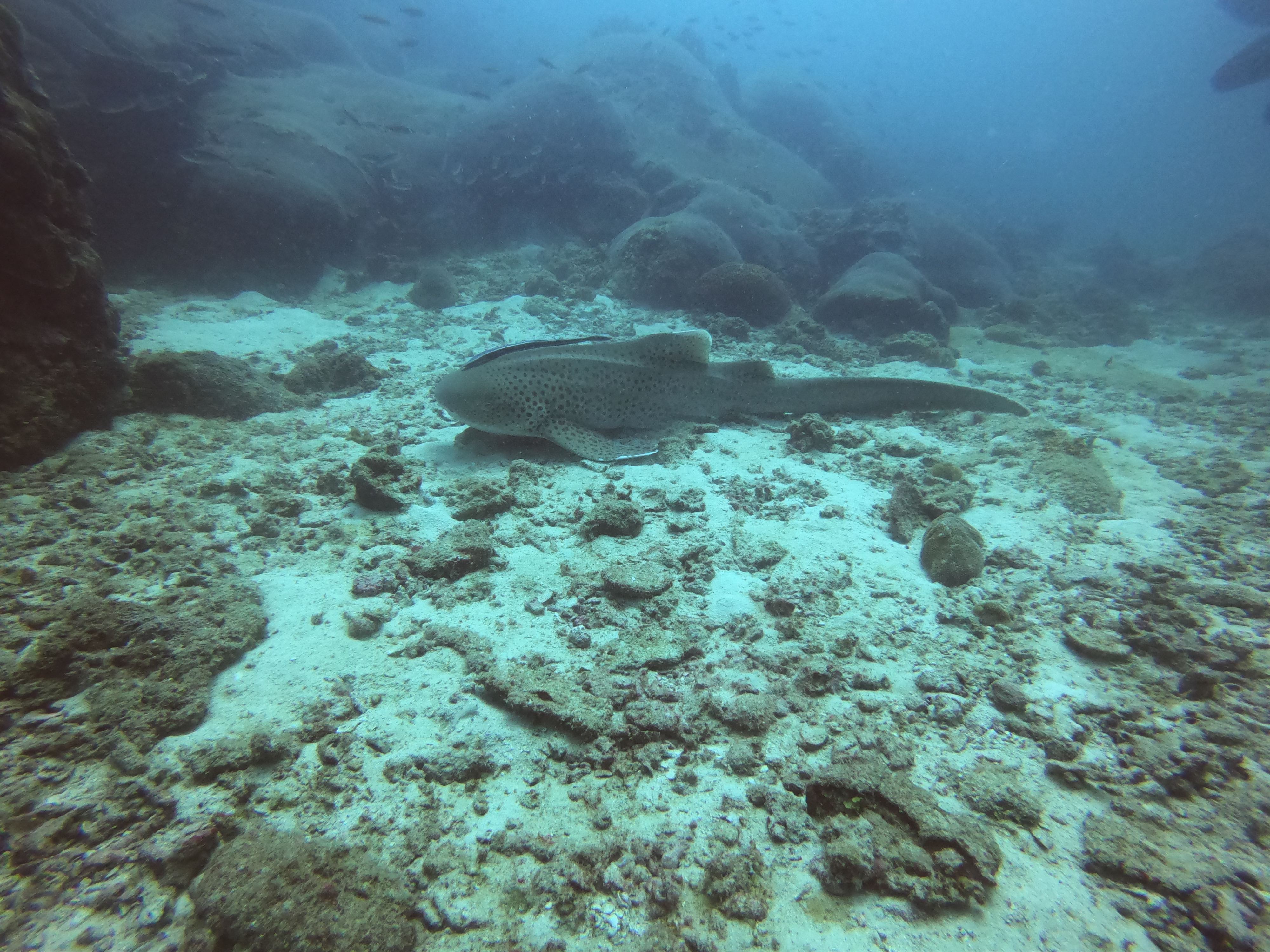
Like other types of sharks, zebra sharks have distinct patterns on their skin. The zebra shark has dark spots across its pale back. However, this is only for adults. For young zebra sharks who are smaller, they have light vertical stripes on their backs.
These sharks range from 8 to 11 ft. long. They live in the waters of the Indo-Pacific. You can find zebra sharks in the waters of Indonesia, the Philippines, and Taiwan.
Zebra sharks are nocturnal. Thus, they mostly sleep throughout the day on the seafloor. When night hits, they swim around and hunt for their food. Zebra sharks feed on fish, crabs, and snails. They will also eat mollusks and sea snakes.
Was this page helpful?
Our commitment to delivering trustworthy and engaging content is at the heart of what we do. Each fact on our site is contributed by real users like you, bringing a wealth of diverse insights and information. To ensure the highest standards of accuracy and reliability, our dedicated editors meticulously review each submission. This process guarantees that the facts we share are not only fascinating but also credible. Trust in our commitment to quality and authenticity as you explore and learn with us.
